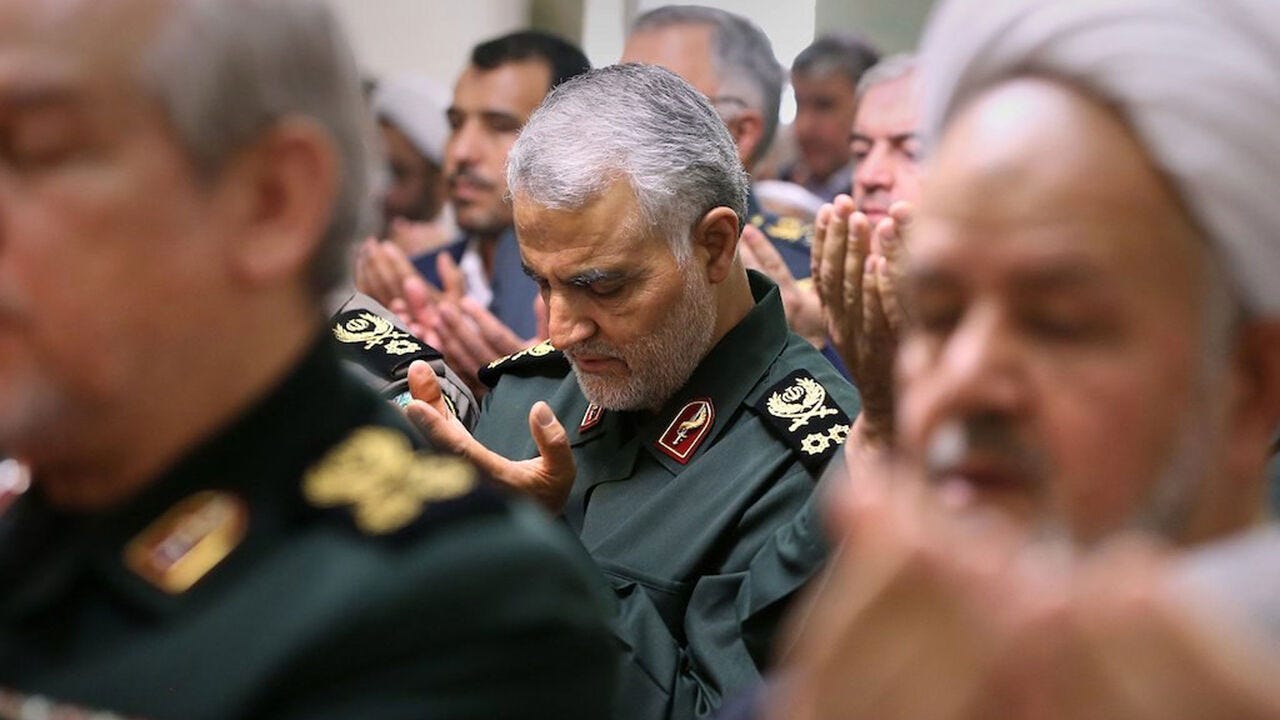Unknown Author | June 12, 2025
The Shadow Commander Edition
On Iran, Geopolitics, and Soleimani.
Colin here. Qassem Soleimani was one of the most consequential leaders most people have never heard of. He was killed in the pre-dawn hours of January 3, 2020, when a U.S. drone strike near Baghdad International Airport took out a man who rarely appeared in public, but shaped nearly every modern conflict in the Middle East.
The operation removed Iran’s major strategist from the battlefield, one responsible for hundreds of American deaths in the Middle East, and an expert at pulling proxy strings across a very complicated series of factions and allegiances.
His network was built on violence, destabilization, and the deliberate prolonging of conflicts that killed thousands of civilians. But understanding how he operated reveals things about the cult of personality, and the ability to align people to a cause.
Why is this interesting?
Soleimani didn't wear medals or present as an egocentric general. He had street cred earned from a lifetime of fighting on the front lines. Arash Azizi, in his book The Shadow Commander, calls him "the most enigmatic warlord in the Middle East," and that ambiguity was key to his reach.
As a leader, he travelled light, often at night, slipping across borders with handwritten notes and field reports. As commander of Iran's Quds Force, he ran the region's most complex network of proxy militias through calibration: a mix of quiet conversations, and small favors that compounded over time, and memory.
Soleimani was the central node in a distributed and very complex system. Soft diplomacy was his superpower. He made time for fighters. He sat with local commanders. He remembered names and offered up a worldview rooted in resistance, dignity, and revenge. It was effective recruitment for a fundamentally destructive cause.
Azizi writes in his book that Soleimani claimed, "I control the policy for Iran when it comes to Iraq, Syria, Lebanon, Gaza, and Afghanistan." In many ways it was true: a parallel foreign policy run through militias and myth.
Soleimani understood that narrative, delivered in person and reinforced by action, can bind a region more effectively than treaties or tanks. His death offers an experiment in what happens when a myth loses its anchor.
Five years later, his image is omnipresent in Iran: painted across overpasses, stamped on children's books, turned into martyrdom merchandise. But the machine he built is unspooling. Militias remain, but seem rudderless. Hezbollah has been largely decapitated. Shia factions in Iraq are increasingly fragmented. The "Axis of Resistance" is worn and fraying around the edges.
Soleimani is a case study on the power and the fragility of influence built on personal relationships. His network's unraveling suggests that even the most sophisticated shadow operations ultimately depend on irreplaceable human elements. Even in an age of increasing state influence and bureaucracies, durable power still flows through individual personalities, their relationships, and the master narratives around them. (CJN)
